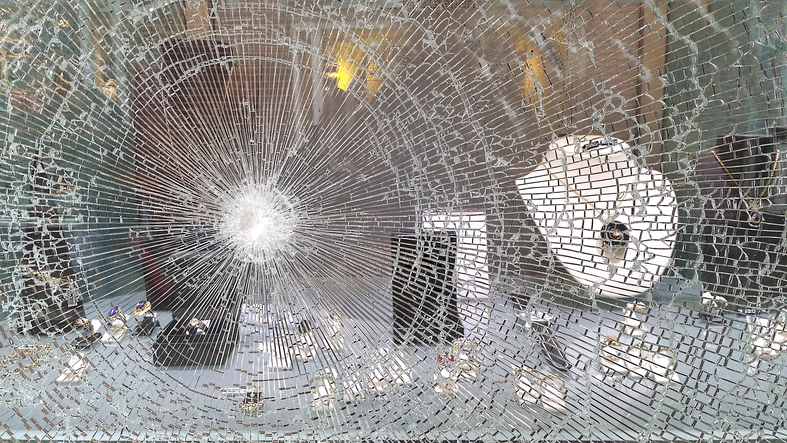This article was originally published in the San Mateo Daily Journal
By Alyse DiNapoli, Daily Journal staff
On a Friday afternoon in late June, San Mateo police Detective Dustin Lorensen headed to T.J. Maxx off Concar Drive, responding to a potential retail theft.
By the time he arrived, several officers were already gathered in the nearby Trader Joe’s parking lot, speaking with the suspect, a woman in her 60s, as well as the store’s loss prevention agents, or employees who monitor the premises for potential shoplifters.
Despite the suspicious activity — she had gathered a handful of items and asked an employee if she could show them to her boyfriend in the parking lot without paying — a police search turned up nothing.
But upon running a cursory background check, police came across an outstanding warrant from a previous theft in Palo Alto, stemming from a failure to appear for a previous court date.
“If you keep missing the court date, the judge is going to keep increasing the bail,” Lorensen said to her, handing over another citation with a new court date before parting ways.
Cite-and-release interactions, especially for retail theft, have become increasingly common over the past several years and especially since COVID-19, when preventing jail overcrowding was a top priority. For retail theft charges on items under $950 — a misdemeanor — law enforcement officers typically issue a ticket, rather than arresting and booking individuals in jail. While the approach helps curb incarceration rates, it doesn’t always deincentivize repeat offenders.
“The failure-to-appear-rate has, since COVID, gotten astronomical. At the height of COVID, it was about 50% that weren’t showing up,” San Mateo County District Attorney Steve Wagstaffe said. “The court technically has the power to sentence up to a year, but by and large they don’t … the DA’s Office files 14,000 to 15,000 misdemeanor cases a year, and the judges just want to move these cases along.”
Reexamining Prop. 47
Since Proposition 47’s passage in 2014, many crimes were reduced from felonies to misdemeanors, including some theft and drug-related charges, and the effort was touted as a more compassionate approach to crime, instead of punitive measures that did little in the way of rehabilitation.
But as major retailers shut their doors in places like San Francisco — seemingly helpless to rampant theft — and cheap consumer goods are increasingly locked behind glass doors, many corporations, as well as prosecutors and police officers, are pushing lawmakers and the public to reexamine whether the current approach is sustainable long term.
On July 8, San Mateo police arrested a 24-year-old Daly City resident for taking more than $5,000 from Lululemon in the Hillsdale Shopping Center, making it his eighth time stealing from the store in less than six months. At the end of last year, an East Palo Alto woman with a lengthy criminal record was caught stealing a $1,900 art piece from the San Mateo County Center, which houses the Superior Court and Sheriff’s Office. Soon after, she took $1,000 from a store, and just last month, she assaulted an Uber driver right before stealing merchandise in Redwood City.
Statewide, commercial burglary and robbery increased about 15% between 2019 and 2022. San Mateo County had a 53% spike in shoplifting during that same time period, making it the largest such increase out of the state’s 15 largest counties, according to data from the Public Policy Institute of California.
A recent initiative, Proposition 36, qualified for the November ballot and would amend parts of Proposition 47 pertaining to theft and drug-related crimes. If passed, theft under $950 could be charged as a felony after two or more related convictions. It would also increase potential punishment and jail sentences based on the total amount of goods stolen from prior incidents.
“When you’ve committed theft three, four, five times, at some point, it should be able to be elevated to a felony,” Wagstaffe said.
Other efforts
Rachel Michelin, CEO of the California Retailers Association, said the organization has been working hard to get a package of over 10 bills through the Legislature, tightening up loopholes or strengthening protections for retailers.
Assembly Bill 3209, for instance, would allow the issuance of criminal protective orders to safeguard stores against serial shoplifters, prohibiting them from not just entering the establishment where they committed the crime, but in other franchises or parking lots as well. Senate Bill 1144 would impose more rules for online third-party sellers, especially those that list goods on a marketplace like Amazon but conduct off-site transactions.
The impacts of such policies would be statewide, but it could have the strongest effect in the Bay Area, which had some of the highest shoplifting rates in California between 2019 and 2022.
Impact in this county
The county’s largest cities — Daly City, San Mateo, Redwood City — have all seen increases in retail theft arrests in the last several years. Daly City saw a 240% increase from 2019 to 2023, from about 116 to 398, and based on the first few months of 2024, it is on pace to surpass last year’s figures. Redwood City saw more modest increases in retail theft arrests, but police reports for such incidents increased by about 50% during that same time period. San Mateo has seen a roughly 75% increase in retail theft arrests since 2020 and is also on pace to surpass last year’s figures based on its arrest numbers in the first three months of 2024. Even small neighboring cities, such as Belmont, have seen increases, going from five arrests in 2019 to 56 last year.
San Mateo police spokesperson Officer Jerami Surratt said it’s increasingly common for individuals from San Francisco or East Bay to come to the Peninsula to steal goods and resell them in places like the Mission Street BART stations in San Francisco. Wagstaffe said, at one point, about half of inmates in the county jail had an out-of-county residence.
“It sure seems like in a large number of these cases, the city of residence is sometimes San Francisco and a lot out of Oakland, and they’re coming down to use our county as their shopping mall,” Wagstaffe said.
The majority of the reports and arrests over the last several years have occurred at major retail locations, such as The Home Depot, Target and the Hillsdale, Bridgepointe and Serramonte shopping centers.
San Mateo’s Apple store upgraded its security approach, opting to hire a police officer to keep watch at the location and deter criminals. The number of loss prevention agents have increased as well, as have trackers placed on merchandise in the event they are stolen.
Retail theft task force
Toward the end of last year, the county used grant funding to create an organized retail theft task force, in which police officers from Daly City, San Bruno and San Mateo respond only to retail crimes — largely coming directly from loss prevention agents — and specifically in those three cities, as they have the county’s largest malls and shopping centers. The team made about 88 arrests between October and April.
“It’s not just about arresting a suspect or a criminal that is doing the theft itself, but then doing the investigation to see where that item is going, and if it’s part of a larger resale,” Surratt said.
In the last couple years, the state has invested more heavily in such programs. The California Highway Patrol currently runs about five statewide task forces and, at the local level, they are supported largely via grants. It’s yielded some progress, though Michelin said there is still room for improvement.
“We need law enforcement and DAs to prosecute, even if it’s a misdemeanor, because when people know that they’re going to be held accountable for breaking the law, hopefully they’re not going to continue to break the law,” she said.
Each region and theft operation sees varying levels of sophistication. In San Mateo County, Wagstaffe said there hasn’t been much concrete evidence connecting thefts to national or international crime rings — rather, the extent of the organization often involves a group of individuals coordinating when and how they will run in and out of a store and resell it in an urban area or online.
A complicated problem
Many are also committing theft to support drug habits, Detective Lorensen said, making it a particularly complicated problem to fix. Initiatives like Proposition 36 would also increase penalties for some drug-related crimes, but Lorensen is acutely aware that incarceration alone is a myopic approach to combat crimes fueled by addiction and mental health conditions, in some cases leading to more harm than good. The Lake County native has both personal and professional experience dealing with substance abuse, as his mother, stepfather and two brothers have struggled with such conditions most of his life.
“We grew up with a meth lab in the backyard,” he said, adding that the experiences he’s dealt with in his family have helped him interact with county residents going through similar struggles.
“I always try to be encouraging … you don’t realize what you might say that will have an impact on someone.”
Attempting recovery while also living in poverty often requires navigating a frustrating, bureaucratic labyrinth to receive even the most basic support. And while the idea that addiction is an illness, rather than a moral defect, has become more accepted over the years, it doesn’t always take shape in practice, he added.
Finding a balance
Jacob Denney, associate director of research at Vera Institute of Justice, agrees there should be less barriers to critical support and behavioral services, though he said the potential legislative crackdowns are reminiscent of the failed tough-on-crime policies of the 1980s and 1990s, which have particularly catastrophic impacts on teens and young adults.
“We have a real risk of doing harm to young people,” Denney said. “They’re not mob boss kingpins. Sentencing children and young adults will have disastrous long-term effects … what we need are more opportunities to connect people to housing and more services.”
Bills that would expand retailers’ ability to issue protective orders for serial shoplifters, for instance, are typically overkill, as current law already permits stores to do so adequately, he said. And currently, Proposition 47 generates significant cost-savings due to a smaller jail and prison population to support, with much of that freed-up funding going toward necessary support service grants.
“[Proposition 36] could have the effect of stripping that money away,” Denney said.
Gov. Gavin Newsom and several other Democratic leaders also opposed the ballot measure, offering up a competing alternative that was withdrawn soon after introduction. Some leaders at the city level, however, such as San Francisco Mayor London Breed, have thrown support behind it, citing the demand for stronger crime deterrents.
For Michelin, the bills working their way through the Legislature are reflective of a state and even national need to implement more accountability, and by extension, public safety.
“I do think we need to find a balance,” she said. “We don’t need to throw people in prison for stealing three times, but we do need to say, ‘Hey, you’re going to have to face some consequences if you’re going to be a serial shoplifter.’”

